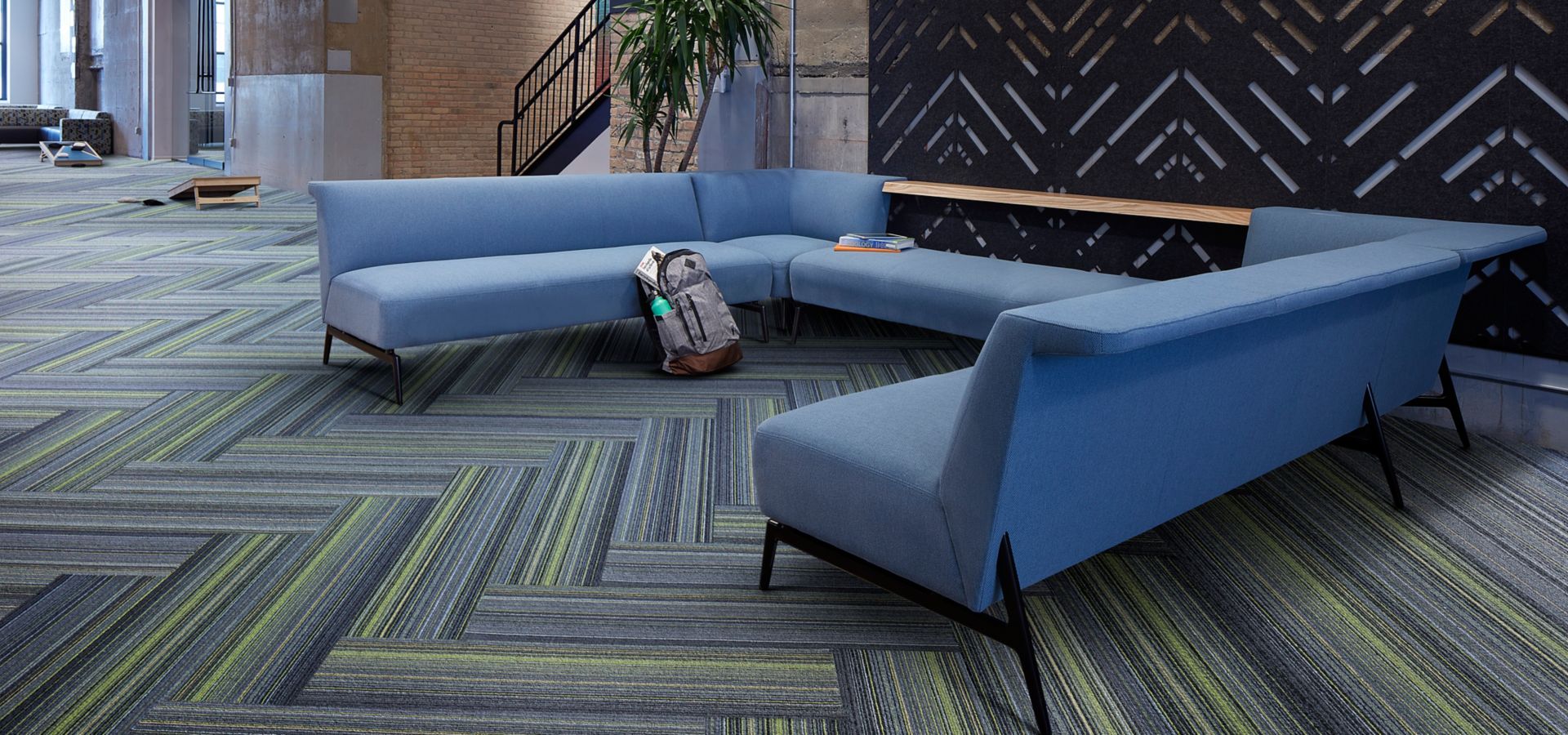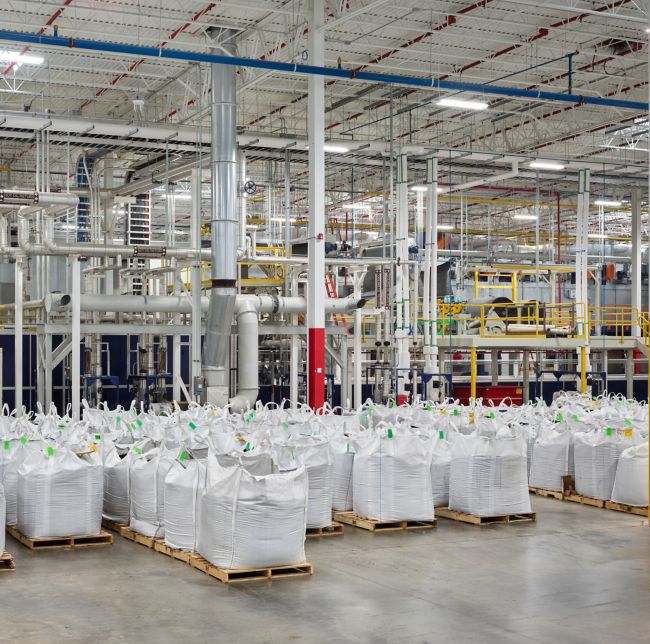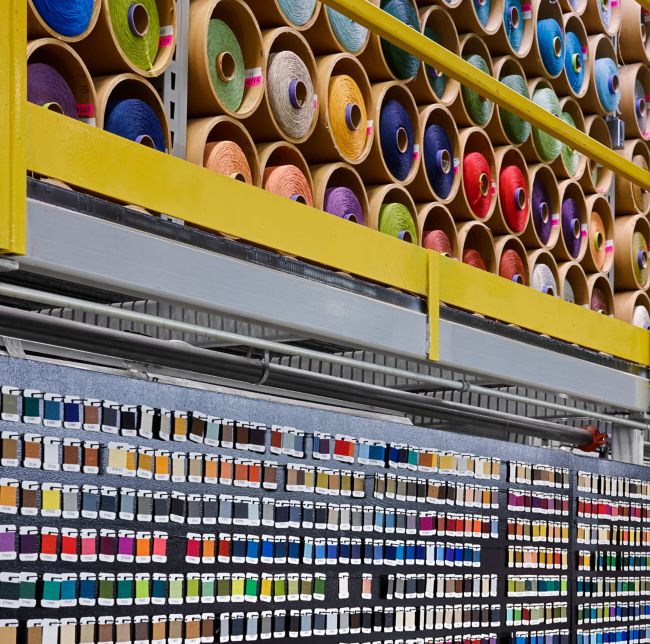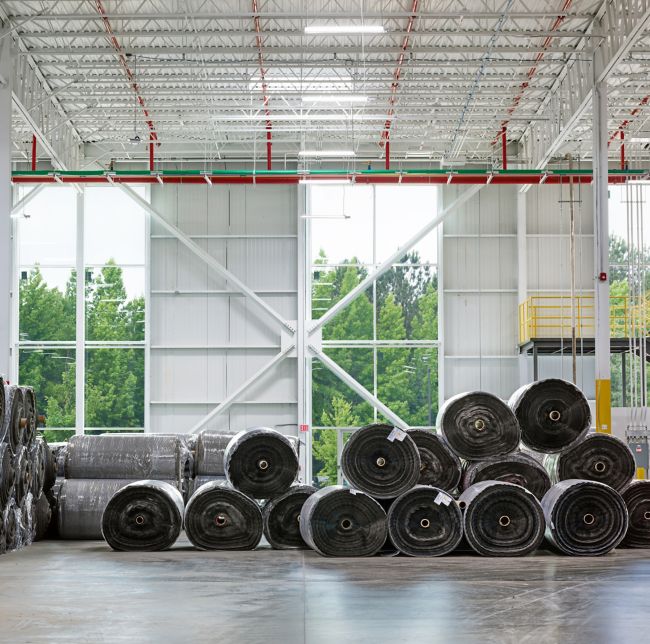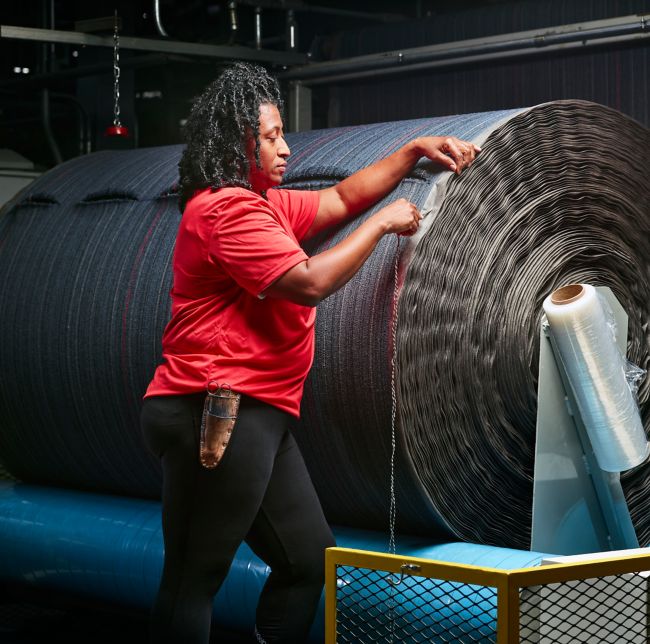Select a Location
It’s flooring—and then some. Made for More.
We are Innovators
When it comes to what goes into our flooring, we’ll always ask, “What if? How can we make this better?” At Interface we’re continually investing in the latest machinery, chemistry systems and materials science, all to do better for our customers and for the world.
We’re known for pushing boundaries and for our innovations in biomimicry and recycling. We’re taking these aspirations even further and engineering products that go beyond carbon neutral to carbon negative.
Here is just a sampling of the product innovations we’re proud to put our name on.
Our First Carbon Negative Carpet Tile
Less carbon in the atmosphere. More beauty on your floor. That’s what we had in mind when we developed our first carbon negative flooring products. Guided by materials science, we’ve transformed our global backings systems with our carbon negative CQuest™ backings.
This innovation, in combination with specific carpet tile designs, means we can now offer carbon negative carpet tiles. It's proof that the pursuits of great design and sustainability are inseparable.
Carbon Reduction
Interface is taking a bold step in our sustainability journey to focus on direct carbon reductions, not offsets, to meet the urgency of the climate crisis.
Carbon negative carpet tile changed everything for Interface. We now know it’s possible to store more carbon than we emit. We want to challenge ourselves and others to become carbon negative, enterprise wide, without offsets. It’s time for us all to back up our words with investment in solutions that accelerate carbon reduction and storage.
Recycling
We changed the face of recycling in the US in 1995, and then we took it to the world. At Interface, our ReEntry® recycling and reclamation program puts our sustainability goals into practice.
Each year we divert millions of pounds of post-consumer carpet from landfills, feeding compatible materials that we re-use in our products. Our ReEntry process recycles Interface carpet and LVT products as well as flooring from our competitors and follows a closed loop system; a manufacturing practice that turns used flooring into new flooring.

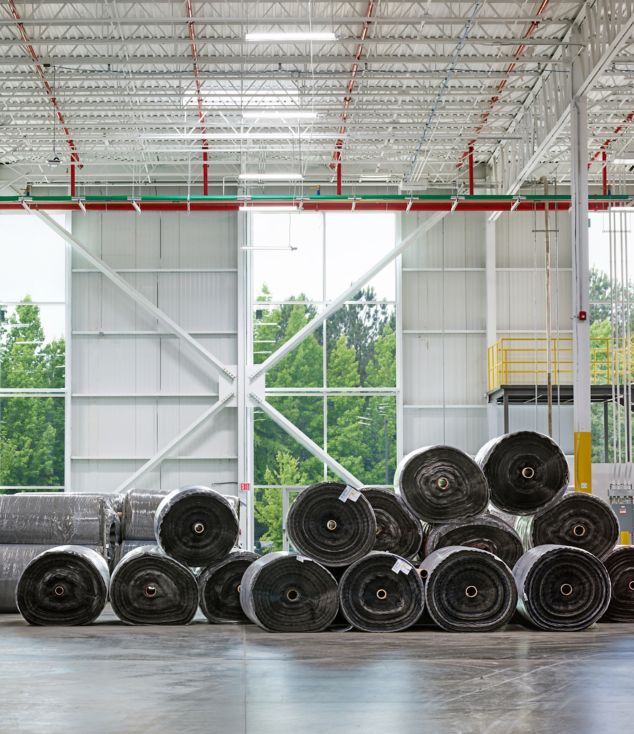
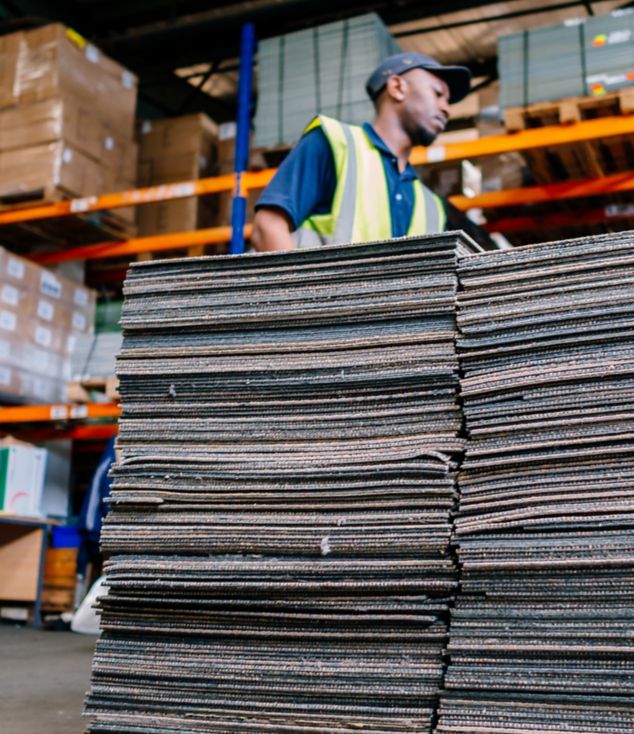

Our First Carbon Negative Carpet Tile
Less carbon in the atmosphere. More beauty on your floor. That’s what we had in mind when we developed our first carbon negative flooring products. Guided by materials science, we’ve transformed our global backings systems with our carbon negative CQuest™ backings.
This innovation, in combination with specific carpet tile designs, means we can now offer carbon negative carpet tiles. It's proof that the pursuits of great design and sustainability are inseparable.

Carbon Reduction
Interface is taking a bold step in our sustainability journey to focus on direct carbon reductions, not offsets, to meet the urgency of the climate crisis.
Carbon negative carpet tile changed everything for Interface. We now know it’s possible to store more carbon than we emit. We want to challenge ourselves and others to become carbon negative, enterprise wide, without offsets. It’s time for us all to back up our words with investment in solutions that accelerate carbon reduction and storage.

Recycling
We changed the face of recycling in the US in 1995, and then we took it to the world. At Interface, our ReEntry® recycling and reclamation program puts our sustainability goals into practice.
Each year we divert millions of pounds of post-consumer carpet from landfills, feeding compatible materials that we re-use in our products. Our ReEntry process recycles Interface carpet and LVT products as well as flooring from our competitors and follows a closed loop system; a manufacturing practice that turns used flooring into new flooring.
Ecometrics: From Our Factory to Your Floor
We are constantly trying to improve our energy efficiency and reduction in waste. Here are our figures based on the 2023 EcoMetrics Report.
Has the Carbontech Revolution Begun?
Carbontech is the productive use of carbon dioxide. Read the New York Time’s Magazine’s profile of how Interface is at the forefront of driving this innovation forward.
Read the ArticleHere's to Progress
We’ve made great progress over the last 25 years with our carpet tile. We’ve reduced our product footprint by 74% cradle-to-cradle. We’re using this knowledge and experience to reduce the carbon footprint of the rest of our portfolio, including LVT and rubber flooring. All LVT products are now made with 39% pre-consumer recycled content – and we’re working towards even more. Using more bio-based and recycled materials, coupled with our dedication to sustainable manufacturing, means we can improve our LVT products to be even better – to benefit the world and our customers.
We’re continually working to reduce the carbon footprint of our nora rubber floor coverings by using more recycled content and by improving our manufacturing efficiencies.
